Following in the huge success of my previous post in which I featured my first ever homemade Lo Mai Gai, I feel very encouraged to go forth and try other sticky rice dishes from my home region. I went through a big learning curve this week in regards to cooking with said rice and how to prepare it. Unlike the more normal Thai jasmine or Indian basmati varieties, glutinous rice is steamed, not boiled in water. Another thing I have learnt is that before you cook sticky rice it has to be soaked for up to six hours prior. Then the rice is drained, placed in a steamer basket, be it plain or with some flavour enhancing component, and left to cook for about 20 – 40 mins.
‘Nasi Kuning‘ literally means yellow rice, and it is a very traditional form of rice served in Malaysia. Nasi kuning is prepared and eaten predominantly by the Malay-musliim community, and it is taken to be a rather festive dish. You can therefore find it served up on special occasions like weddings, engagement parties, religious ceremonies and of course at Hari Raya. The rice gets its yellow hue by soaking the rice in tumeric powder overnight. The next day it is drained and steamed along with some water and pandan leaves. Some people steam the rice along with salt and coconut milk, but I prefer to add the coconut milk at the end just so I can control the wetness of the finished product. I don’t like mushy rice.
Everybody likes a good ‘pulut‘ meal, hence its popularity every year when Hari Raya rolls around. People of all ethnicity flock to the various Muslim bazaars to get their share of this stuff along with a side of spicy curry. ‘Pulut‘ is the general term for glutinous rice and it can be cooked in a number of ways, the most famous of which is ‘lemang‘. Now you don’t get any more traditional than by cooking lemang. This method of cooking is so old, it stems from the indigenous tribes of east Malaysia, Indonesia and Borneo. Rice is placed inside a hollow tube of a bamboo that has been lined with banana leaves. The leaves prevent the rice from sticking to the bamboo wall. Water, salt and coconut milk is then poured into the bamboo tube and everything is roasted over an open fire for about four hours. It takes skill to get it done right, from the stoking of the fire to the checking of rice doneness. When the cooking is over the bamboo is split in half and the log of perfectly cooked rice is removed, sliced into rounds and eaten with meat and gravy. Making lemang is hard work and is commonly a job left to the menfolk.
The only difference between lemang and nasi kuning is the method of cooking and the colour. Everything else is pretty much the same. With lemang I suppose you do get that nice woody, slightly charred taste of the bamboo and smoke. There’s none of that with nasi kuning. Preparing the rice at home is surprisingly easy … if you can overlook the long soak time. All you need to do is decide how much of the stuff you want to cook ahead of time, soak in water with some salt and a splash of vinegar or assam keping. You don’t need much … about a tablespoon or two thin slices of the assam keping. Now, I cannot verify the authenticity of this claim, but it is said the acid prevents the rice from breaking up during the cooking process. But what do I know? This is only the first time I am cooking this.
Get your steamer ready by boiling the water. If you are using a steamer basket, line the bottom with parchment paper to stop the rice from falling through the mesh and into the water. I just used a metal bowl that I lightly smeared with veggie oil to allow for easy unmoulding later. A little bit of water in there with the rice isn’t a problem … in fact many experienced housewives prefer to steam their rice already mixed with water, salt and coconut milk. Don’t have a steamer? Well, neither do I. Just use a large lidded pot that is wider than the bowl your rice is in … place a round pastry ring at the bottom and rest the bowl on the ring … fill water in the pot … steam as usual. At the bottom of the rice bowl I place a knot of pandan leaf.
Steam for about 20 – 40 mins, depending on how much rice you are steaming at one go. Ethnic dishes like this I usually cook a small portion just for me because more often than not R. will not partake of my cooking. After cooking the rice should look pretty dry but cooked all the way through. I tend to not put so much water in with my rice to ensure they don’t come out mushy. There is nothing worse than overly wet sticky rice. I think my method of adding the coconut milk at the end has more to do with my novice skills and inability to judge appropriate liquid-to-rice ratios than anything else. As I get better at it I’ll probably start cooking the rice with the coconut milk like a pro and not even bat an eyelid.
Empty the freshly cooked rice into a large glass bowl and spread it out with a rice paddle. Now slowly add coconut milk and salt a bit at a time, mixing continuously to distribute evenly using wide folding motions. Once you are happy with the consistency, leave it aside to cool completely. Pulut rice, in my opinion, is best eaten at room temperature. When it is warm the rice tends to be a touch too soft. There are no real measurements to making the rice; it’s all eyeballing and intuition. As for the beef rendang tho, that’s a whole other ball game and you’d definitely want a recipe for this.
A rendang is a spicy and fragrant meat dish that is slow-cooked over a long period of time. The resulting dish will be a deep brown colour with hardly any gravy left, but the meat will still be succulent and tender. Traditionally beef is the meat of choice since beef withstands the prolonged cooking time and relatively cheap cuts are used. However, these days chicken rendang is also very popular.
The failure or success of a rendang really depends on your spice paste. I cannot stress enough how important this step is. Despite the fact that the ingredient list seems long and the preparation seems tedious, I urge you to soldier on; you will be rewarded at the end. So take the time to focus in the beginning. I searched high and low for a good recipe that wasn’t too involved, and of all places I found one on VideoJug, and the recipe adaptation is listed below. I did make some amendments to suit my taste but they were minor tweaks.
Malaysian Beef Rendang.
(adapted from VideoJug … of all places)
To dry roast and grind to a powder
- 1 cinnamon stick
- 2 tsp cumin seeds
- 2 star anise
- 2 cloves
- 6 cardamom pods, seeds removed
To roughly chop and grind to a paste
- 4 shallots, peeled and roughly chopped
- 3 sticks lemongrass, tough outer leaves removed and chopped
- 5 garlic cloves, peeled
- thumb sized piece of ginger, peeled and chopped
- 5 dried red chillies, soaked in warm water for 2 hours
- 3 tbsp vegetable oil
1 tsp salt
1 kg stewing beef
300 ml coconut milk
1 tbsp palm sugar
6 tbsp toasted dessicated coconut
10 kaffir lime leaves, whole
125 ml water or beef stock
Step 1: Make The Spice Paste
Tip the cinnamon, cumin, anise, cloves and cardamom into a dry frying pan and roast for a minute or so until fragrant. Pour the spices into a pestle and mortar or spice grinder and grind to a fine powder. Tip the spices into a food processor with the shallots, lemongrass, garlic, ginger, dried chilli, vegetable oil, salt and blend to a smooth paste. If you do not have the means to grind up your whole spices then just use the powdered variety of each. Not as awesome … but good enough. If you do not fancy too much spice then adjust the chilli amount accordingly.
Step 2: Cook The Curry
Set a casserole over a medium-high heat , add the spice paste and fry, stirring constantly, for 5 minutes until dark and sticky. You may have to do this in a fair amount of oil to avoid the spices catching on the bottom of the pot and burning.
Add the beef to the pan and fry for a further 2-3 minutes, stirring well to coat evenly. Add the coconut milk, beef stock and remaining ingredients then stir to combine. Bring to the boil, turn the heat down, and cover and cook gently for 2 hours or until the beef is tender. Now, you can also use a pressure cooker to cut the cooking time in half or simply bring the rendang to the boil, cover and shove it in the oven for 2-hrs for an even cook. I didn’t fancy standing by every so often to stir the beef and ensure none of the spices burnt on the bottom of the pot. The longer the beef cooks and the dryer the gravy becomes the higher the risk of catching, especially if you are cooking on a stove top. To dry up the liquid in the oven I left the lid off for the final hour of cooking. Always adjust the salt at the end of the cooking process. As the beef cooks down and the liquid evaporates, the flavours will intensify. There will be a significant amount of oil on the surface at the end so brace yourself. Simply use a ladle or a large serving spoon to skim this off before serving.
** Oven cooking = 1-hr covered + 1-hr uncovered @ 140ºC
Wow, I was suuuper impressed with this recipe. Not only did it sound authentic, it certainly smelt it too. The smell of rendang is unmistakeable, full of lemongrassy coconutty notes backed by cinnamon, cardamom, cummin and chillies. Omg, heaven on earth!! It really is the smell of Hari Raya. Now, I need to get something off my chest and I have been meaning to say this for some time. For the record, let it be known that a rendang, much like a traditional Bolognaise sauce, is a meat dish. There ain’t no such thing as a fish rendang no matter how many Western cooks try to convince you otherwise. A few months ago I stumbled upon a YouTube cooking channel hosted by a professional chef (the name of which I shall refrain from mentioning) and they were making a big hullabaloo about their “Indonesian fish rendang” recipe. I kindly pointed out to them that the dish does not exist, so perhaps they ought to not call it by that name. An indirect response soon arrived … granted it was not by the channel owners but by their fans, directing my attention to the so-called disclaimer at the bottom that said something to the effect of …”while a rendang is usually made with meat, we’ve switched things up a bit by using the same flavour concept, adding fish and keeping the sauce rather creamy”. Don’t you just hate that? They’ve essentially made up a fish dish using a store-bought spice paste from a jar and NONE of the cooking technique, slapped on a disclaimer and felt that it was okay to present the dish for what it was so blatantly not. They even whacked in some BUTTERNUT SQUASH for heavens sake … and still called their dish a rendang at the end of it all. *rolls eyes* I feel they missed the concept of a rendang entirely, and it does rub me the wrong way. Would you call a thin broth-like soup with spring vegetables and a little bit of shredded chicken a “switched up version” of cassoulet?? I didn’t think so. While I am all for cooking outside the box and being adventurous in the kitchen, I don’t think classics should be messed with to the point of being totally unrecognizable from its original form. On a more positive note their other stuff are all awesome and I watch their channel all the time.
Anyway, glad I got that off my chest … and all is right with the world again. My sister asked me for this rendang recipe, I hope it doesn’t disappoint. It turned out really well for me and even R. helped himself to a healthy portion. He ate his dinner with plain rice tho because by the time he ventured a taste of my nasi kuning and decided he liked it after all, it was too late … I wasn’t about to share mine, nor was I prepared to cook a second batch.
There is still some beef leftover so guess what’s for my dinner again tonight? With all curry-like dishes, long braises and casseroles, eating them a few days later is always a good idea. And even when all the meat is gone I will still soak up all that lovely bits of dry spice with bread. This dish isn’t exactly meant for the weight conscious, so I don’t think I will be making this again until a good long time has passed. Too rich and too indulgent for regular eating.
Anyway, do try it out and remember that patience goes a long way here. Don’t rush the process and you will end up with an amazing beef rendang fit to be served in any Malaysian home. So far I have featured only one other classic dish that uses sticky rice, a Chinese delicacy called Lo Mai Gai, and today I debut this Indo-Malayan one (although to be honest I think this post is more about the rendang than anything else … hehe). Next week I will probably do a Thai dessert using the same kinda rice to underscore its versatility and to highlight how different cultures in the region use this product in different ways. So stay tuned.
~ Enjoy! ~


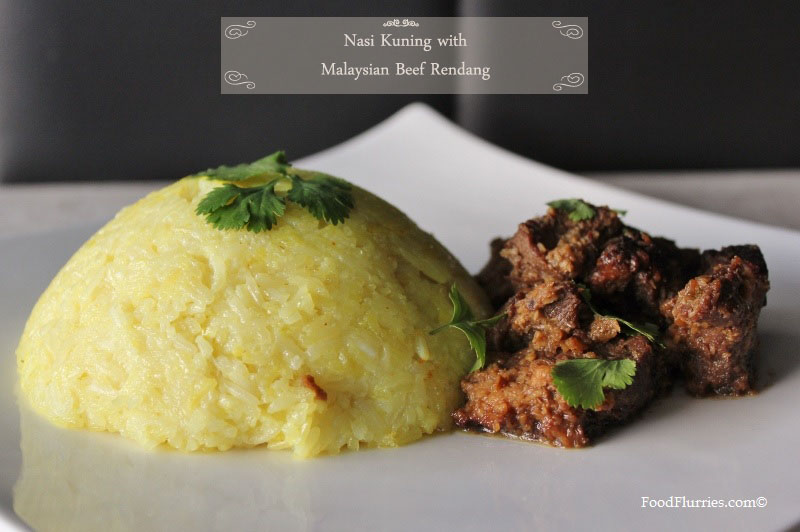
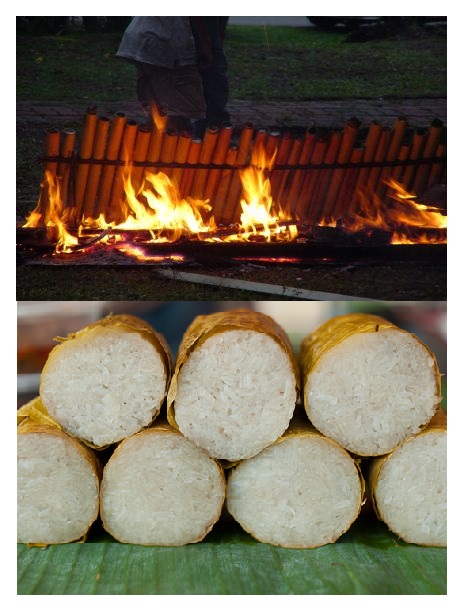

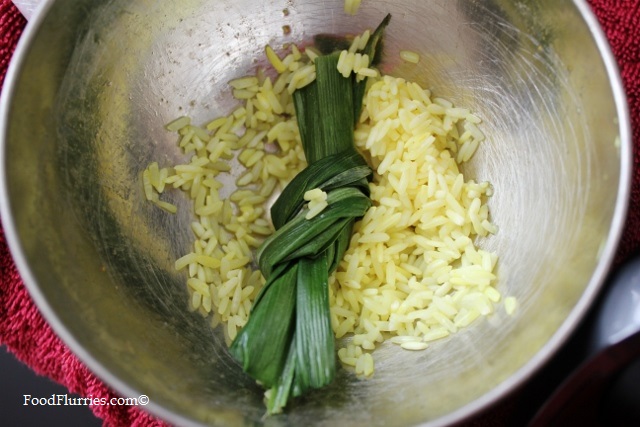
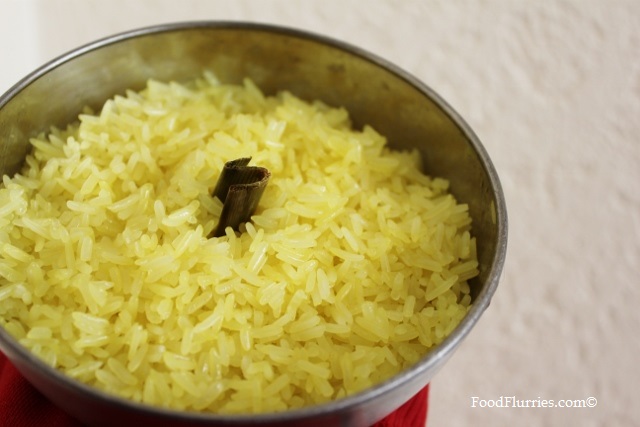
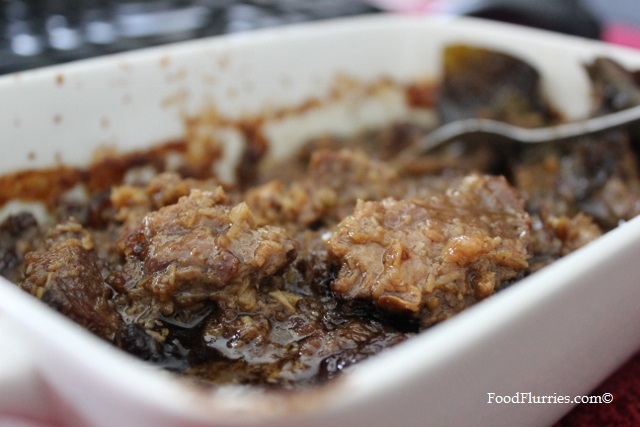


What people are saying…